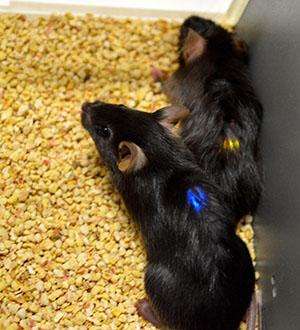Researchers at the Washington University School of Medicine, St. Louis and University of Illinois at Urbana-Champaign have developed implantable devices that can activate — and in theory, block too — pain signals traveling from the body through the spinal cord before they reach the brain.
The devices are controlled through wireless technology and have huge application in the treatment of chronic pain in parts of the body that don’t respond to other types of treatment. The full study has been published in the journal Nature Biotechnology.

Image via phys
“Our eventual goal is to use this technology to treat pain in very specific locations by providing a kind of ‘switch’ to turn off the pain signals long before they reach the brain,” said co-senior author Robert W. Gereau IV, PhD, the Dr. Seymour and Rose T. Brown Professor of Anesthesiology and director of the Washington University Pain Center.
The devices are soft and stretchable so they can be implanted into any part of the body, Gereau explains. Previously, similar devices had to be anchored to bone tissue and proved problematic with limbs or other movable body parts.
“But when we’re studying neurons in the spinal cord or in other areas outside of the central nervous system, we need stretchable implants that don’t require anchoring,” he said.
The implants are sutured in place, and each boasts a microLED light that can activate specific neurons. The team behind them hopes to use the implants to blunt pain signals in patients who have pain that cannot be managed with standard therapies.
Experiments with genetically engineered mice (that were given light-sensitive proteins in some of their nerve cells) showed great promise for the devices. To demonstrate that the implants could influence the pain pathway in nerve cells, researchers induced a pain response. The mice were placed in a maze and as they walked through a specific area, the devices lit up and caused the little rodents to feel discomfort. When they left the area, the devices turned off, and the animals quickly learned to avoid the pain inducing part of the maze.
The experiment would have been very difficult with older optogenetic devices, which are tethered to a power source and can inhibit the movement of the mice.
As the new devices are smaller than those previously available, flexible and can be sutured in place, they have potential uses bladder, stomach, intestines, heart or other organs.
“They provide unique, biocompatible platforms for wireless delivery of light to virtually any targeted organ in the body,” he said.
Rogers and Gereau designed the implants with an eye toward manufacturing processes that would allow for mass production so the devices could be available to other researchers. Gereau, Rogers and Michael R. Bruchas, PhD, associate professor of anesthesiology at Washington University, have launched a company called NeuroLux to aid in that goal.






